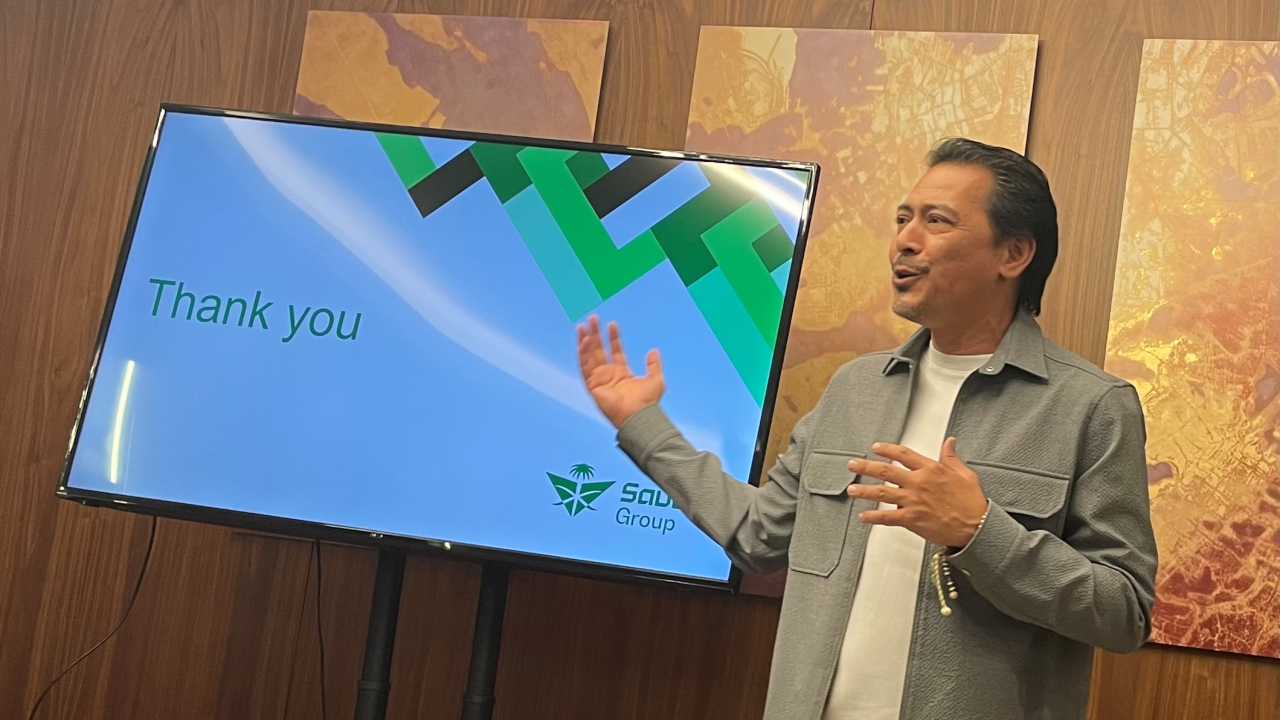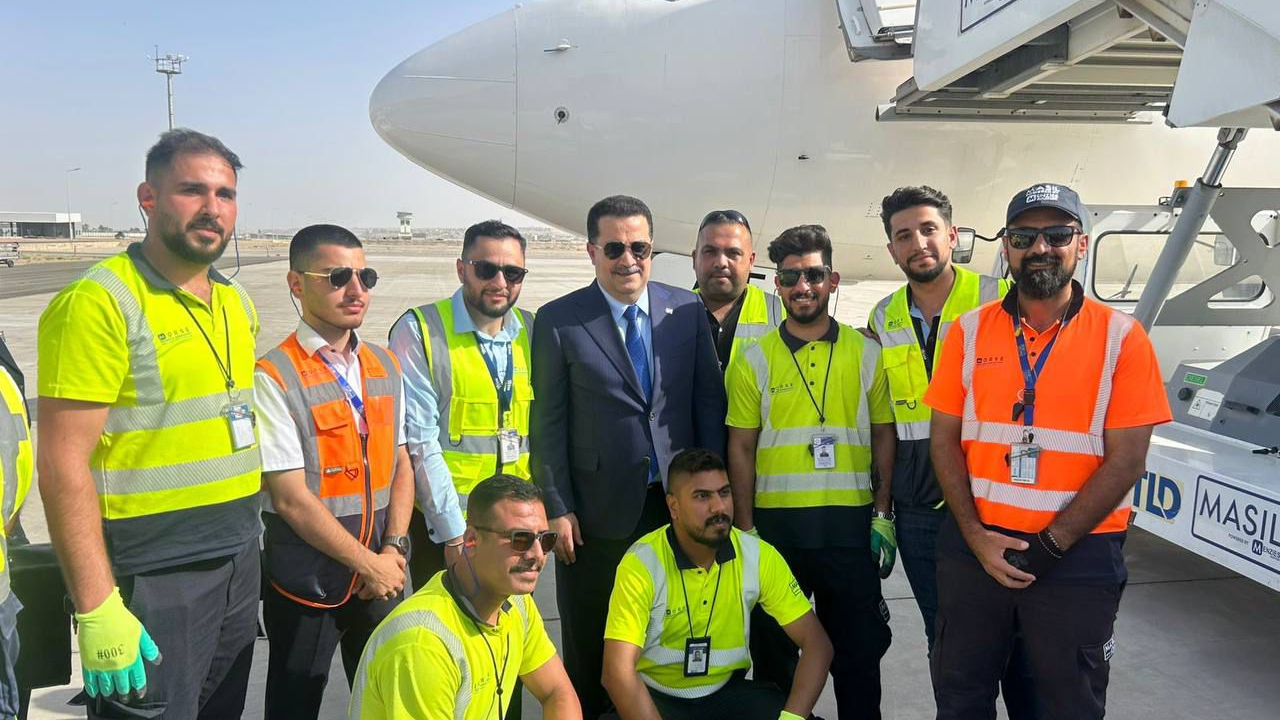Saudia retains growth target for 2025; happy with orderbook for now
Saudia is maintaining its traffic growth forecast at 7-8% in 2025 after reviewing the impact on travel demand following the Iran-Israel missile attacks in mid-June.

Khaled Tash, group chief marketing officer at Saudia Group speaking to media at an event to mark the opening of its new lounge at London Heathrow’s Terminal 4.
This was explained by Khaled Tash, group chief marketing officer at Saudia Group speaking to media at an event to mark the opening of its new lounge at London Heathrow’s Terminal 4.
“We don't think that the impact is going to be severe. Of all the markets in the region, we were probably the safe place. When things were happening, Saudi airspace was the plan B for a lot of airlines,” said Tash
Saudia welcomed a record 35 million passengers in 2024, a growth rate of 15% compared to the previous year. This was boosted by the delivery of three Boeing 787s and several Airbus A320neos last year.
The Saudi flag carrier’s growth is slowing because the traffic surge in the post-Covid period has normalised and “deliveries for us this year are slowing down”, noted Tash.
This year Saudia is not taking deliveries of any widebodies nor will the first of 15 A321XLRs begin arriving until 2026, which is later than expected but not something that worries the carrier very much.
This is because the coming years are going to be “an incredible growth era for Saudia”, he said.
“We are set to receive 191 new aircraft as a group from now until 2032,” explained Tash. Today the carrier is operating a fleet of 168 aircraft across the group, including low-cost arm Flyadeal. Of 191 aircraft on order, 118 will be operated by Saudia and 73 by Flyadeal.
“In 2026 and 2027 we will be receiving over 100 new aircraft. That is an unprecedented growth in terms of new aircraft in the region, enabling us to grow like never before,” said Tash.
“The new aircraft will help us achieve our target of increasing our number of destinations,” he said. Today Saudia has grown to serve 100. “Our target in 2030 is more than 145.”
After the Saudia Group ordered 10 A330neos for Flyadeal in April, the group is not looking to add to its widebody orderbook for now. “I don't think that we have a pressing need,” said Tash.
“We still have 49 deliveries of the 787 Dreamliners coming in,” he added. “That's a mix between the 787-9 and 787-10, so we believe we're good for now. But as you know, the market is not only about what you need right now. Sometimes you see an opportunity and you jump on it.”
The A321XLR is seen as an important new tool in Saudia’s network development. “That is an aircraft that we believe will redefine a lot of regional travel between the Middle East and Europe primarily,” said Tash. “I think we're going to see the XLRs serving a unique role in that connectivity.”
As Saudia gears up for significant fleet expansion, it is undertaking a cabin retrofit programme on all its existing fleet of 75 777-300s and A330s to bring them to the same interior product standard as its newly arriving widebodies. This will take place from the end of 2025 into 2027, said Tash.
The carrier is also installing the latest generation of on-board Wi Fi. “We have 10 aircraft equipped and we think we are going to finish the entire fleet in the next 18 to 24 months,” he said.
Saudia investing heavily in its aircraft and on-board product is emblematic of how the group, which will celebrate its 80th anniversary at the end of this year, is changing with a focus on the guest experience, on-time performance and seeking to cater for the huge influx of visitors to the kingdom as envisaged by Saudi Arabia’s Vision 2030.
“For the greater part of our history, Saudia as an airline and as the national flag carrier of Saudi Arabia really had a mission of taking Saudis to the world,” said Tash. “Today, that mission is also the other way around. It's about bringing the world to Saudi Arabia, and that needed a complete transformation.”
The opening of the Heathrow premium lounge, in addition to lounges in Cairo, Paris, Istanbul and Dubai, is another sign of Saudia seeking to cater for the overseas market.
Vision 2030, where the kingdom’s tourism sector has a target of 150 million visitors by the end of the decade, “is a big enabler for us,” said Tash.
This applies not only to the airline but to all businesses in the Saudia Group such as Flyadeal, MRO, cargo and its training academy. “All our strategic decisions are based on what Vision 2030 is trying to achieve,” he said.
“We believe that Vision 2030 serves not only as a kind of a master blueprint for the country, but it opens up opportunities for us that were that were not there before.”
Asked about the impending launch of Saudi Arabia’s second national carrier, Riyadh Air, Tash said: “The headline is whatever they are planning to bring into the market is going to be top notch. We follow very closely what they're doing and planning, and I have no doubt that they're going to give a world class, premium experience.”
And while the arrival of Riyadh Air is “great competition for us…we are not very concerned with the competition from a demand and supply perspective,” said Tash.
In a market that “is booming in terms of demand, both inbound and outbound”, and while taking into account Saudia’s ambitious growth “there will still be enough room for another national carrier”, he noted.
Tash also stressed the importance of Riyadh Air as “a very important customer to Saudia” with the newcomer signing up with Saudia Group companies for ground services, in-flight catering, MRO and training.
Stay up to date
Subscribe to the free Times Aerospace newsletter and receive the latest content every week. We'll never share your email address.

